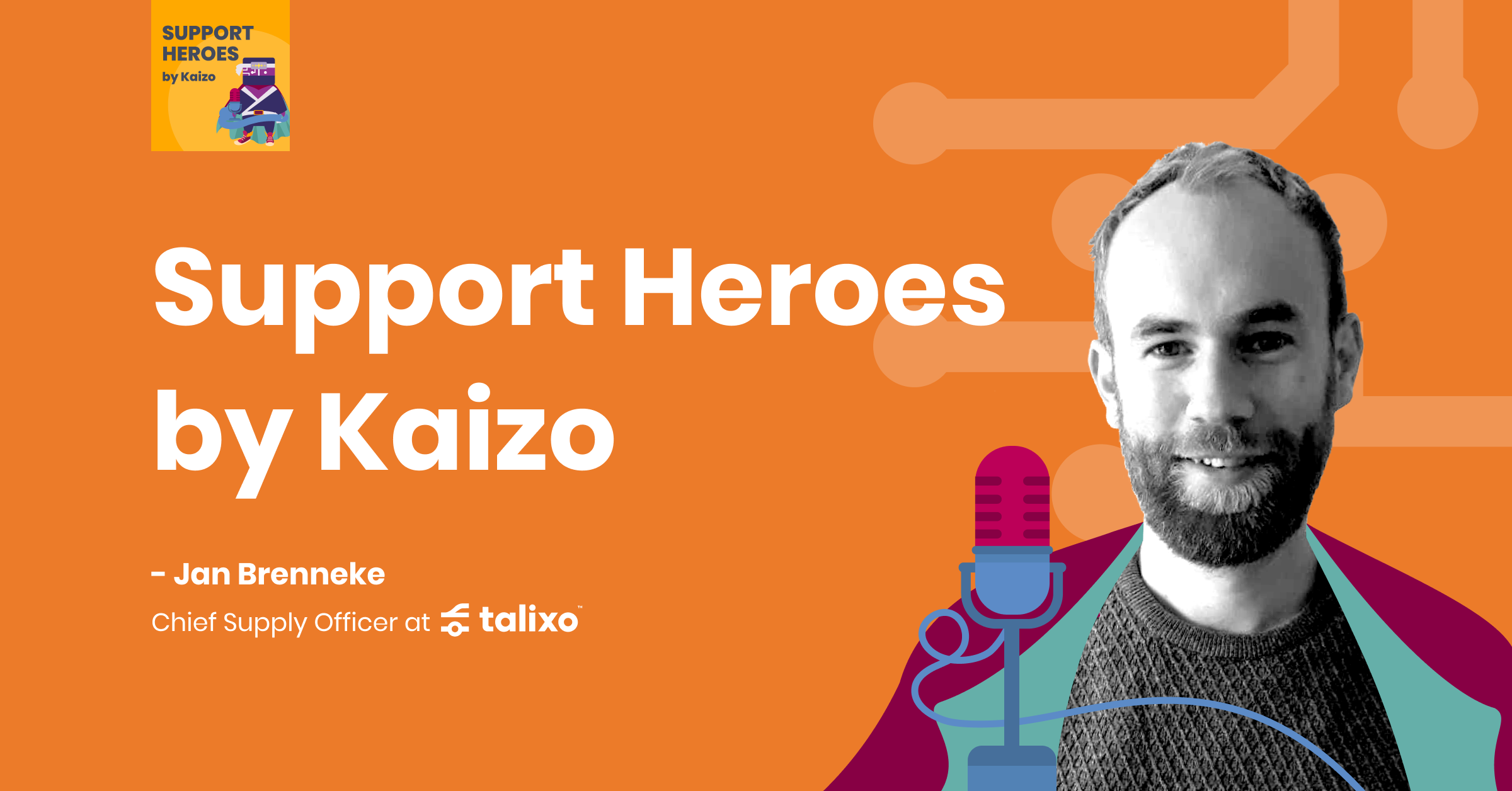Click ‘subscribe’ above to listen or download from Apple Podcast, Spotify, and Google Podcast
The fourth release of Support Heroes by Kaizo featured Jan Brenneke – Chief Supply Officer at Talixo.
In this episode, Jan explores the world of customer support metrics and divulges his valuable insights on common pitfalls and paths to success when using data and analytics to operate your team.
“The real challenge, a challenge that is unique to customer service, is that you need to consolidate all the metrics into a framework that tells you something”
Key Takeaways:
1. Be a Customer Service doctor for your team
2. Context is key – look beyond the numbers
3. Setup incentives schemes with the right metrics in the right way
Be the Customer Service doctor for your team
“A common misconception of people in the customer service industry is that there is a lot of data available in customer service.”
For some business teams, it is a little bit of a challenge to define metrics or to really measure the work. In customer service, there are usually a lot of metrics readily available via the CRM you use. It is easy to measure 20 KPIs, 30 KPIs all at the same time.
“What falls a little short sometimes is that there’s not a very sophisticated understanding of how to weave these metrics together.”
Looking at metrics in isolation doesn’t tell you a lot. Jan suggests viewing the role of a customer service manager more like a doctor.
“Similar to a doctor, you need to look at these indicators in a comparative fashion so you don’t miss out on the bigger picture”
In other words, collect metrics together like a doctor collect symptoms, diagnose the problem based on the holistic view of all the symptoms and prescribe a solution for the root cause.
Context is key- look beyond the numbers
“I think it’s not so much about utilising underused metrics, it’s more about evaluating metrics in the right context”
Jan noted there is a tendency to incentivise agents to have a low resolution time- to minimise the time between a ticket arriving and being resolved. However, this fails to account for the fact that the full resolution time is not something the agent can always influence. For example, if a department is understaffed, resolution time will increase by no fault of the agents on the shift.
“It’s about thinking, ‘how can I take certain metrics and use them to incentivise agents’…and then asking, ‘are there metrics that are better suited to this use-case’”
Another example can be found in one-touch tickets. One-touch interactions benefit the company and the customer, resolving the issue in one clean interaction. If a company has a low one-touch resolution rate, there could be many reasons for this. For example, if customers don’t provide the necessary information to agents to solve their issues in one reply.
In this situation, the wrong conclusion would be to give a bonus to each agent for every one-touch ticket because the root-cause does not lie with the agent.
“You need to evaluate metrics within a certain context and be conscious of the root-causes that you attribute to certain metrics. In this instance- one-touch and resolution time.”
Setup incentives schemes with the right metrics in the right way
“This is another one of the biggest challenges. There is a whole range of management science on how to motivate employees”
In Customer Service environments it’s very common to have a monetary bonus scheme. Particularly for repetitive tasks, management science has found that a monetary bonus can provide a much-needed spark of motivation. However, the bonus must be attainable if it is to be motivating.
“Monetary incentive schemes can work but it has to be based on a metric that the agent can influence.”
Incentivizing a low backlog through a monetary bonus scheme when there is a perpetual backlog will not motivate agents because this isn’t something they can solve themselves.
“When you set up a monetary incentive scheme, it’s really important to focus on something everyone can influence”
There’s an art to devising an effective incentive scheme because each agent needs to feel like they’re the owner on their own destiny and they need to know exactly what they need to do/improve in order to get there.


